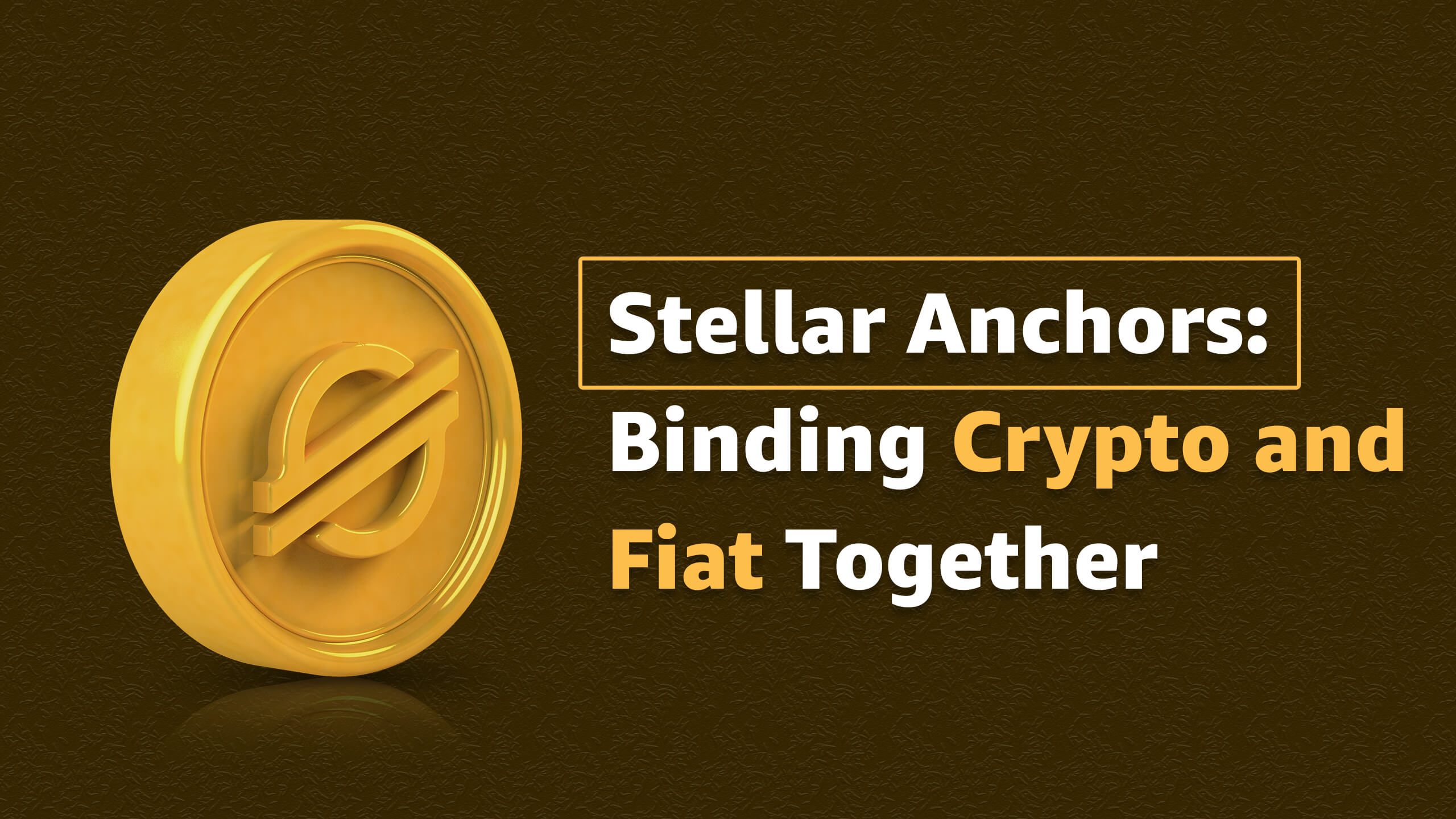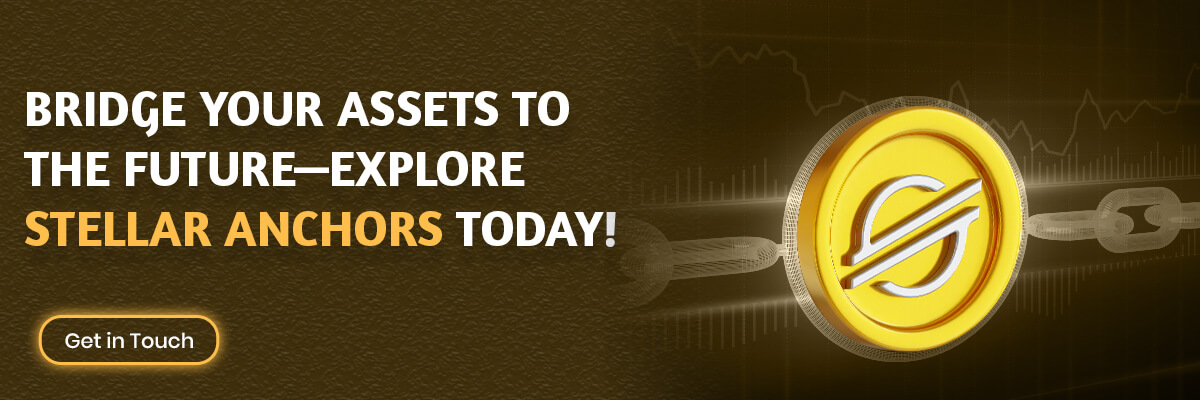There is no doubt that Stellar has become a revolutionary platform in the decentralized finance ecosystem. From implementing the principles of financial inclusiveness to facilitating borderless transactions, it has opened new opportunities for traders and investors across the world. Its specialty lies in the fact that users can trade between fiat and crypto tokens easily on this platform without any additional issuance or verification protocols. But what truly made this possible is the set of Stellar anchors that are capable of bridging the gap between fiat and cryptocurrencies and offering streamlined financial services and products to the users.
While this might sound tempting, you must be wondering what the Stellar anchor is and what’s its role in the finance ecosystem. Before you start using Stellar or build high-volume finance applications on its blockchain, it’s essential you have a basic idea about the Stellar anchors and their operations. Only then you will be able to harness its true potential for your purpose and deal in payment transactions without having to worry about the returns on your investment. This being said we have compiled a detailed guide on Stellar anchor, explaining what the feature is, its operation, its benefits, and other related facts.
Introducing Stellar Anchors: A Brief Definition
In the traditional finance world, different payment systems are implemented for every jurisdiction. As a result, when global payments are initiated, they have to undergo numerous security and governance systems. It introduces significant delays in transaction execution, incurs exceptionally high fees, and limits the geographic reach. In other words, global payments using a traditional ecosystem are quite difficult and often lead to stuck or failed transactions with no clear reason.
However, with Stellar anchors, this problem can be resolved with ease. Anchors act as the bridge between different financial rails, connecting multifarious organizations like banks, crypto exchanges, and other forms of money transfer institutions on the global Stellar network. As a result, users can easily convert fiat currencies to crypto tokens and vice versa without having to worry about the intermediatory regulatory and authority bodies.
Types of Anchors On the Stellar Network
There are four major types of anchors integrated with the global Stellar network, each dedicated to a specific set of functions. Below we have briefly described these four categories for your better understanding.
1. On and off-ramps: These anchors are built to facilitate the inter-exchanges from fiat to crypto and vice versa, regardless of the currency pairs and the geographical payment jurisdictions. From purchasing to selling, withdrawing, and depositing, these allow users to initiate traditional financial operations on both the crypto and fiat tokens with ease.
2. Exchanges: Stellar has its own exchange platform where users can convert their fiat currencies or crypto tokens into the network’s native currency, known as Lumens. Using XLMs, they will be able to pay the transaction fees, maintain the minimum account balance needed to keep the accounts operational, and even take credits or loans by leveraging native currencies.
3. Issuers: Another important set of Stellar anchors that are available for the users is that of the issuer. These allow users to tokenize their real-world assets and convert them into digital tokens for higher liquidity rates, greater accessibility to different decentralized financial products and services, and better management of ownership.
4. Interoperable anchors: Lastly, we have the interoperable anchors that connect traditional banking and other forms of financial rails with the Stellar blockchain. Through this, users can easily invest in fiat currencies and get them converted into cryptocurrencies and vice versa.
Operation of Stellar Anchors: How Do They Function?
Anchors serve as the major connective components in the Stellar global network, ensuring all the involved financial organizations, both centralized and decentralized can communicate with one another seamlessly. However, these need a proper governance and control system that can determine when and how every anchor communicates with one another. The functions of every anchor deployed to the global Stellar network are controlled by using a set of specific standards, protocols, and SEP or Stellar Ecosystem Protocols.
Several standards are designed to promote a collaborative function for the anchors so that users can access new opportunities, advanced financial products and services, and streamlined business efficiency. For example, the conversion of crypto to fiat and vice versa is usually governed by a set of collaborative standards and Stellar Ecosystem Protocols so that centralized and decentralized ecosystems can be merged into a single entity.
Features and Benefits of Stellar Anchors For the DeFi Ecosystem
To use the Stellar anchors to their maximum potential, you must learn more about the contributions they have made to the global network. Below, we have described some of the major benefits of deploying anchors to the global Stellar network.
1. Higher liquidity: Thanks to the issuer anchors deployed to the global finance network of the Stellar ecosystem, users can convert their real-world assets into crypto tokens. It allows them to leverage higher liquidity rates and gain exceptional returns on their investments. Additionally, these allow users to control the ownership of the assets by integrating different smart contracts on the Stellar blockchain.
2. Borderless transactions: One of the major benefits of Stellar Anchor is that it facilitates borderless transactions between different user accounts on the concerned blockchain. Since the anchors serve as the connecting bridge between different financial organizations integrated with the Stellar network, making payments to other accounts located within another jurisdiction won’t be a hassle anymore.
3. Connects to the outer world: Most Stellar anchors are capable of connecting to the banking rails that are prevalent in traditional or centralized financial institutions. Hence, the Stellar global network can be easily connected with the external world and open up new opportunities for the users.
4. Digital fiat currencies: Although the Stellar network serves as a medium of exchange, it allows users to convert their fiat to crypto without having to worry about the intermediatory regulatory standards and governance authorities. Hence, trading in fiat currencies and gaining access to the decentralized ecosystem of the Stellar blockchain is now possible with this platform for all traders and investors.
Conclusion
In this article, we have described how Stellar anchors bridge the gap between the outer centralized finance world with the decentralized ecosystem. These can be considered as the building connective blocks of the global Stellar network, allowing users to exchange their fiat currencies for crypto tokens and vice versa.





